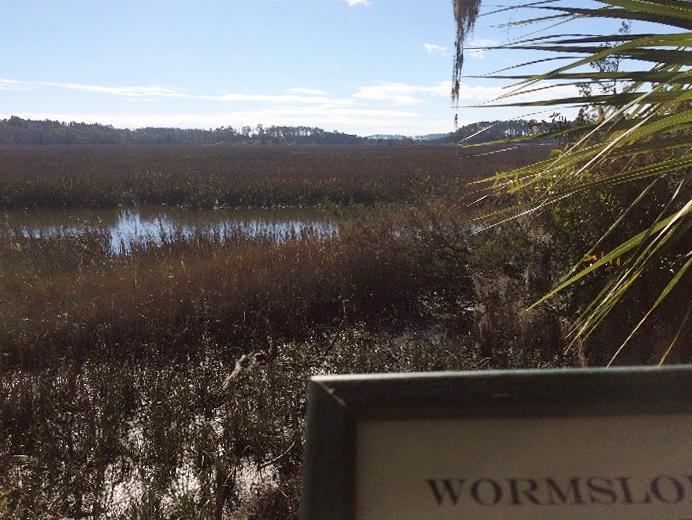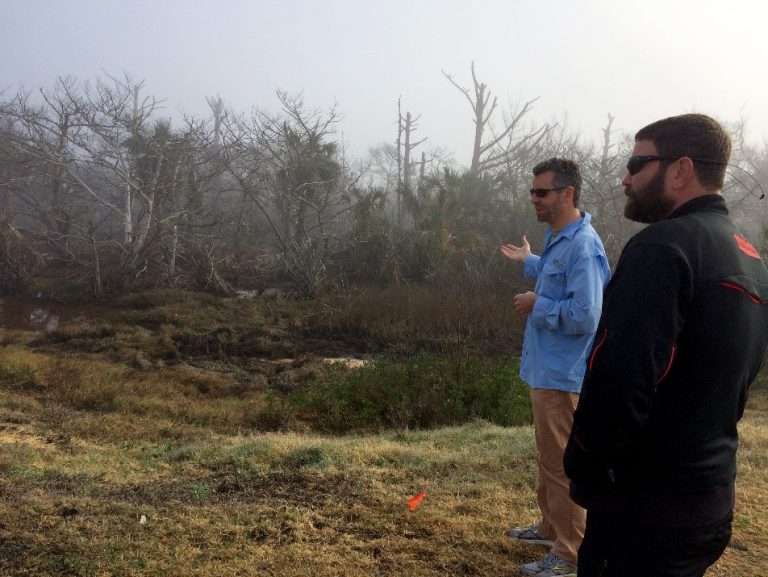MLA Trip to Wormsloe for Eco-Restoration Studies
On the weekend of January 13th Professor Jon Calabria's Eco-Restoration class traveled down to the Georgia Barrier Islands to stay at UGAs campus at Wormsloe, near Savannah, Georgia. The purpose of the trip was to check on several restoration projects that had been set up the previous year: an experiment in the establishment of long leaf pine, a project to create a living sea wall out of oysters, and a project to restore a salt marsh near Fort Pulaski where the levees were failing and the forest was dying back.


The long leaf pines were planted in six different plots, each cleared with a different method, and with differing soil and shade conditions. The class watched as a drone was used to take aerial photographs of the plots that will be used to track the survival rates, growth, and development of the trees.

The class went to the 4-H club on Tybee Island where a bank had been stabilized by stacking bags of oyster shells along the eroding shoreline. Hopefully these oyster shells will act as anchor points for living oysters, eventually creating a dual-function erosion protection and water filtration system.

While on Tybee Island, the class also visited a site at Fort Pulaski that Hurricane Mathew had inundated with salt water, resulting in near total tree loss. As the forest is now gone, and flooding along the coast will likely increase due to sea level rise, this site presents a great opportunity not only to begin to develop design solutions for adapting to rising sea levels, but also to re-establish important habitat.

The class also had free time to enjoy the historic Wormsloe plantation site, the city of Savannah, and some local oysters.

This trip was a good introduction to the possibilities and complexities of eco-restoration. The class saw both successes and failures of design, and how to adapt to the failures. It became apparent ecological restoration is a moving target that must be amended as the science becomes clearer.
The class saw the complex interplay between ecological restoration, and historic preservation and restoration at the Wormsloe plantation. Many of the ecological systems, like the long leaf forests and tidal marshes, have had a significant impact on the area’s history, and vice versa.
The situation is clearly a complex one, with compounding issues of culture, economics, ecology, and now climate change. Nowhere is this most recent complication more significant than the barrier islands along the coast, where sea levels are expected to rise between 1 to 3 feet over the next 50 years. It is vitally important that these mitigation and restoration projects and experiments be undertaken now so that we have a plan for protecting ourselves and the environment in the future
